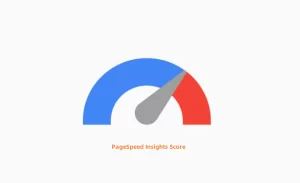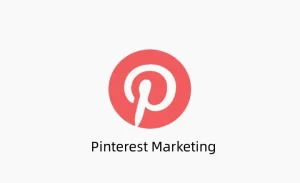As an e-commerce store owner, you’re likely familiar with the frustration of browsing abandonment. It happens all too often – a potential customer visits your site adds items to their cart, and then disappears without completing the purchase.
But what if there was a way to bring those customers back and turn them into loyal buyers? That’s where browse abandonment emails come in. These targeted emails can be a powerful tool to re-engage with customers who left items in their cart and encourage them to complete their purchases.
In this blog post, we’ll showcase 10 best examples of browse abandonment email campaigns to inspire your marketing efforts.

What Are Browse Abandonment Emails?
Customers who view a product or category on your website and leave without adding anything to their cart are sent browse abandonment emails.
Unlike other types of emails, browse abandonment emails don’t require the customer to take any specific action, such as adding items to their cart. Instead, they are automatically sent based on the customer’s browsing behavior.
These emails are a great way to monitor the activities of your email subscribers on your website and use that information to send them targeted promotional emails.
For example, if you’re using a service like Drip, you can easily create browse abandonment workflows that determine when and how these emails should be sent out.
The Best Browse Abandonment Email Examples
Now let’s dive into the world of browse abandonment emails and explore 10 brilliant examples that can inspire your email campaigns. These examples feature clever subject lines, irresistible calls to action, and effective design elements that are sure to capture your audience’s attention.
Example 1: Timberland

Timberland’s browse abandonment email is a great example of this genre. It includes all the elements you would expect to find in this type of email:
- It leaves a clear image of the product without conveying any particular emotion.
- A link that customers can click on to add the item to their cart.
- Alternative product recommendations in case the original product is not suitable.
Timberland’s email stands out for its impressive visuals and uncluttered design. It serves as a great inspiration for crafting browse abandonment emails that are visually appealing and easy to navigate.
Example 2: Humanscale

Humanscale’s browse abandonment email takes a different approach compared to other examples. Instead of pushing customers to buy the items, it creates space for contemplation.
The email asks customers if they need any advice in selecting an item and provides contact information for further assistance.
This gentle approach keeps the tone of the email more subtle and avoids appearing overly aggressive.
Example 3: Mavi

Mavi’s browse abandonment email uses a discreet approach when dealing with customers who abandon browsing.
The subject line mentions the specific product category the customer viewed, reminding them of their recent browsing activity and subtly asking them to give the product another look. The email itself is not pushy and includes a product image, a quick description, and a subtle request to inspect it.

Mavi understands that customers may need time to consider their options and aims to gently remind them of their interests without being too forceful.
Example 4: Buffy

Buffy’s browse abandonment email addresses any concerns or doubts that potential customers may have regarding their return policy, delivery options, or payment methods.
The subject line immediately catches the customer’s attention by directly addressing their browsing activity. The email encourages customers to pick up where they left off and highlights the benefit of a trial period before committing to a purchase.

Buffy also includes product recommendations and emphasizes their try-before-you-buy policy, offering customers the freedom to purchase without the fear of being stuck with something they don’t want.
Example 5: Asos
Asos takes a different approach with their browse abandonment email. Instead of motivating customers to purchase the specific product they were interested in or inquiring about any queries, Asos simply invites customers to view the product again.
This gentle nudge can be effective in prompting someone to purchase without being too intrusive. It’s important to keep your brand and products in the customer’s consciousness, and Asos achieves this by subtly reminding customers about their browsing activity.
Example 6: J.Crew Factory
J.Crew Factory appeals to customers’ desire not to miss out. Their browse abandonment email sparks curiosity by inviting customers to satisfy their style cravings. The email design incorporates visual cues to draw attention to specific items, and the use of “your price” in red implies a potential discount. J.Crew Factory’s email captures customers’ attention by making them feel like they’re missing out on a great deal.
Example 7: Amour Vert

Amour Vert’s browse abandonment email stands out for its stunning design and simple wording. The email flatters customers who left the site, praising them for their exemplary style.
While showering customers with compliments is a popular tactic, it’s important to note that the product recommendations in this email do not resemble the abandoned item.
However, it serves as a great example of how to create an engaging and visually appealing browse abandonment email.
Example 8: Smartwool
Smartwool’s browse abandonment email takes a less typical approach compared to other examples. The email’s subject line, “Stop Hunting. Start Investigating.”, instantly makes it recognizable as a browse abandonment strategy.
Smartwool’s email doesn’t force customers to purchase something they’ve already seen; instead, it takes a more inconspicuous approach to sales. These emails may simply appear as good timing rather than overt sales tactics.
Example 9: Danner
Danner’s browse abandonment email uses the subject line “You’ve earned it,” implying that customers deserve to reward themselves for their hard work. This offer justifies spending money on something special.
The email also includes a link for customers to contact a “Danner expert” if they have any lingering doubts before making a purchase.
Danner’s email appeals to customers’ desire for a well-deserved treat and provides additional assistance to address any concerns.
Example 10: Amazon

Browse abandonment emails can be effectively used by Amazon, known for its excellent email marketing techniques. While the email design may not be particularly impressive, it focuses on providing examples of other items in the same product group.
Including top-selling products from the same category can drive engagement and entice customers who may not have found the original item suitable.
Amazon’s browse abandonment email demonstrates the importance of offering customers alternatives and showcasing a range of products.
How to Implement Browse Abandonment Emails
You can implement browse abandonment emails based on the marketing stack you use and the data you have available. To send effective browse abandonment emails, you need to collect and analyze browser activity to determine the items and categories customers have recently viewed.
Here are some steps to help you implement browse abandonment emails successfully:
- Trigger emails based on pageviews and set a waiting period: Experiment with different waiting periods to determine the most successful timeframe for achieving conversions. For significant purchases, it might be better to delay sending the email for 12 to 24 hours after the user’s browsing.
- Exclude people who are not interested in buying: Focus your attention on users who have spent a significant amount of time on your site and have engaged with multiple pages. This ensures that you are targeting users who are genuinely interested in your products.
- Test your data flow: Verify that the data on your website is correct and functioning properly. Make sure the details being collected and sent to your email service provider or data repository are accurate. An email with incorrect product information or a malfunctioning message can create a negative user experience.
Conclusion
Sending browse abandonment emails is a powerful strategy to re-engage with potential customers who have shown interest in your products. By studying these 10 brilliant examples of browse abandonment email campaigns, you can gain inspiration for your marketing efforts.
Remember to be creative, think outside the box, and tailor your emails to suit your brand and target audience. Implementing browse abandonment emails can help you recover lost sales and turn potential customers into loyal buyers.
You may also want to read:


